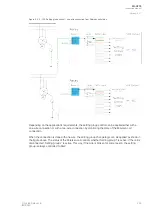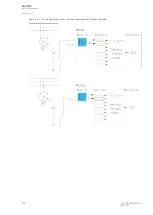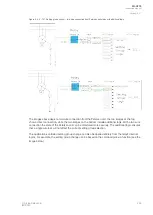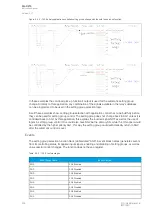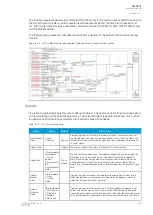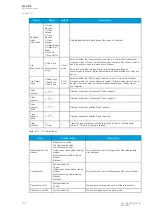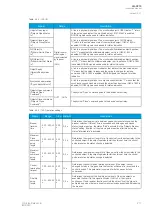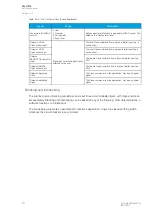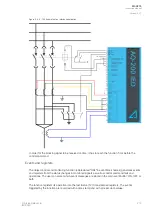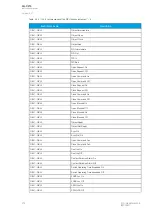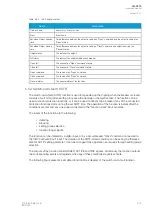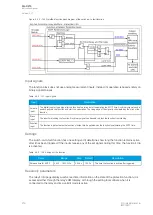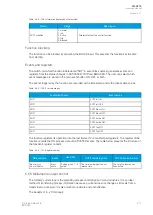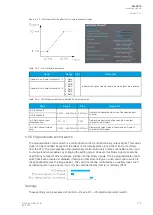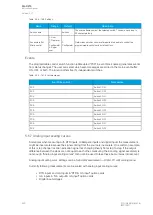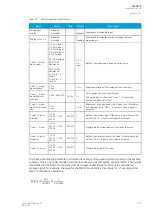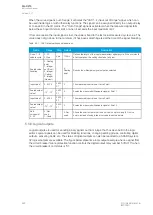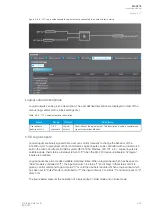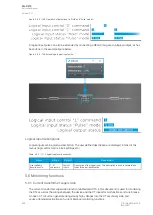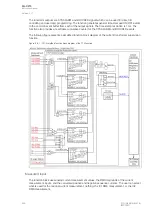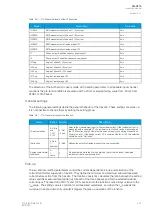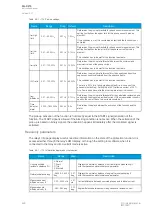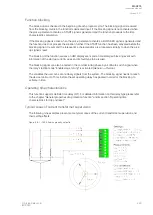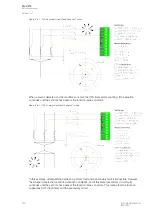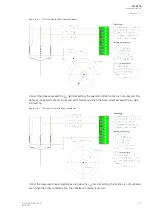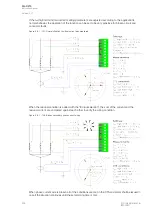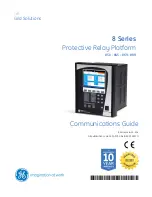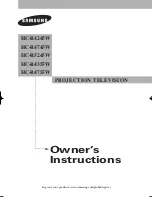
Table. 5.5.4 - 159. Information displayed by the function.
Name
Range
Description
SOTF condition
0: Normal
1: Init
2: Active
3: Trip
4: Blocked
Displays status of the control function.
Function blocking
The function can be blocked by activating the BLOCK input. This prevents the function's active time
from starting.
Events and registers
The switch-on-to-fault function (abbreviated "SOF" in event block names) generates events and
registers from the status changes in ACTIVATED, TRIP and BLOCKED. The user can select which
event messages are stored in the main event buffer: ON, OFF, or both.
The events triggered by the function are recorded with a time stamp and with process data values.
Table. 5.5.4 - 160. Event messages.
Event block name
Event names
SOF1
SOTF Init ON
SOF1
SOTF Init OFF
SOF1
SOTF Block ON
SOF1
SOTF Block OFF
SOF1
SOTF Active ON
SOF1
SOTF Active OFF
SOF1
SOTF Trip ON
SOF1
SOTF Trip OFF
The function registers its operation into the last twelve (12) time-stamped registers. The register of the
function records the ON process data of ACTIVATED events. The table below presents the structure of
the function's register content.
Table. 5.5.4 - 161. Register content.
Date and time
Event
Used SG
SOTF remaining time
SOTF been active time
dd.mm.yyyy
hh:mm:ss.mss
Event
name
Setting group 1...8
active
The time remaining of the set
release time.
The time the function has
been active.
5.5.5 Milliampere output control
The milliamp current loop is the prevailing process control signal in many industries. It is an ideal
method of transferring process information because a current does not change as it travels from a
transmitter to a receiver. It is also much more simple and cost-effective.
The benefits of 4...20 mA loops:
A
AQ
Q-C215
-C215
Instruction manual
Version: 2.07
© Arcteq Relays Ltd
IM00040
217

